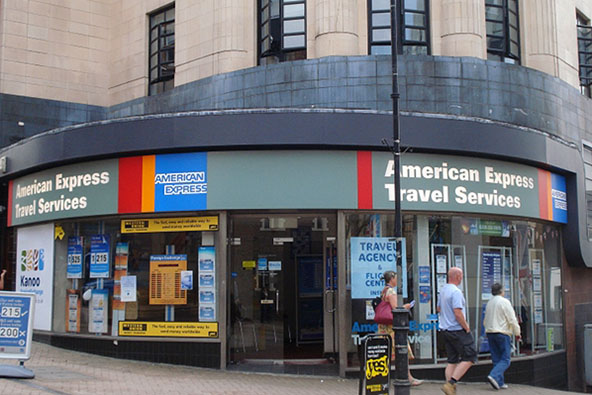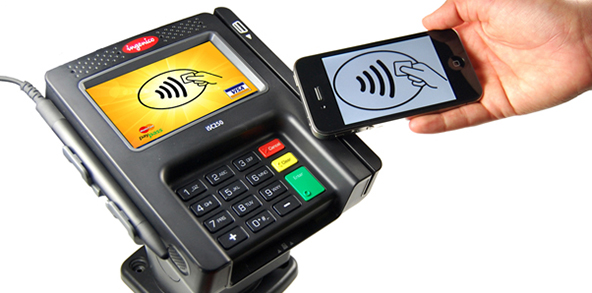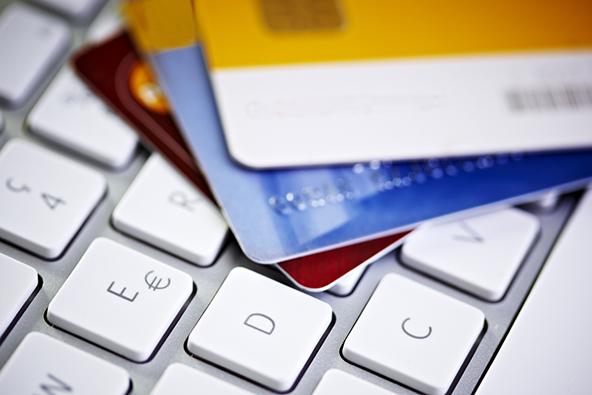American Express Chargeback Reason Codes and Procedures

As is the case with Visa, MasterCard and Discover, American Express has developed and maintains its own system for managing customer disputes about the validity of credit card transactions. In AmEx’s world, such disputes can result in either an upfront chargeback or an inquiry, which are handled differently. Typically, when a chargeback is issued, American Express sends a notification to the affected merchant. If the chargeback is correct, there is nothing for the merchant to do, but accept it and move on. However, if she disagrees, the merchant will have 20 days from the date of the chargeback to request a chargeback reversal.
Today I will review American Express’ chargeback cycle, the causes of upfront chargebacks and inquiries and the reason codes used by the company to designate them. I will also offer tips on how to avoid the most common types of chargebacks, so that you can save time and money fighting them later. Let’s get started.
How American Express Handles Transaction Disputes
As already noted, AmEx handles customer disputes in one of two ways, depending on whether or not the company needs additional information to help it adjudicate the dispute. Here are the two possible scenarios:
1. Scenario 1 — upfront chargeback. If the available information indicates that the customer dispute is a valid one, American Express will automatically debit your merchant account for the amount of the disputed transaction and will send you a chargeback notification for you to review.
2. Scenario 2 — inquiry. If AmEx needs additional information to adjudicate a dispute, the company will send you an inquiry, in which it will request specific documents related to the transaction under review. You have 20 days to respond to that information request. If you accept the chargeback, fail to respond or if American Express is not satisfied with your response, the company will process the chargeback.
Once a chargeback is processed, you will have 20 days to request a reversal if you feel that it was processed in error. American Express will respond to your request with either a reversal or a notice informing you that the chargeback stands.
American Express Chargeback Programs
Some chargebacks arise because merchants are placed in one of AmEx’s chargeback programs. The company may place you in any of these programs either upon signing your contract or at any time during the term of the agreement. These programs are:
1. Immediate Chargeback Program. This program allows AmEx to process a chargeback at any time a cardholder disputes a transaction, for any reason other than actual or alleged fraud and without having to first send you an inquiry. You may be placed in this program for one of the following three reasons:
- You choose to enroll in this program to avoid receiving inquiries or disputes.
- AmEx places you in this program if you meet the company’s criteria for disproportionate inquiries and chargebacks.
- Your industry has historically had high rates of customer disputes (not necessarily resulting in chargebacks).
2. Partial Immediate Chargeback Program. Your enrollment in this program allows AmEx to process chargebacks below a predetermined amount, without having to first send you an inquiry at any time a cardholder disputes a transaction for any reason other than actual or alleged fraud. All disputes for charges that are above that predetermined amount will be processed under the standard policy. You may be placed in this program for one of these three reasons:
- You choose to enroll in this program to avoid receiving inquiries for charges below a specific dollar amount.
- Your AmEx agreement stipulates participation in this program.
- Your industry has historically generated high rates of customer disputes.
3. Fraud Full Recourse Program. This program allows AmEx to issue chargebacks without first sending you an inquiry at any time it receives a cardholder dispute that is based on actual or alleged fraud. You may be placed in this program for one or more of the following reasons:
- You are classified as a high-risk merchant.
- AmEx receives a disproportionately high number of inquiries and chargebacks relative either to your prior history or to industry standards.
- Your merchant account has been cancelled for being fictitious, prohibited or otherwise in violation of the agreement.
Be advised that the above list of reasons, for which you may be placed in one of AmEx’s chargeback programs, is not exhaustive. At its sole discretion, the company may place you in any one of them at any time.
Common Causes of Chargebacks and Inquiries
Here is a list of the ten most common causes of AmEx chargebacks and inquiries, complete with reason codes, and tips on how to avoid them.
|
Chargeback Cause |
Tips to Avoid It |
|
1. No Knowledge of the Charge Inquiry Code 127 Cardholder claims to not recognize or remember the Charge |
– Maintain consistent information on your billing descriptor and include your “doing business as” (DBA) name and location, so that cardholders can recognize your transactions on their statements. – Show your phone number in the billing descriptor so that cardholders can call you directly, before filing a dispute. |
|
2. Unauthorized Charge Inquiry Code 177 Cardholder claims that the charge was not made or was unauthorized. |
– Ensure that the card is present for all card-present transactions and, when required, obtain the cardholder’s signature on the transaction record (except when the charge qualifies for the No Signature Program). Training your staff to do this can also be helpful. – For transactions where the card is not present, ensure that you have express consent from the cardholder to bill him / her for specific goods or services. You should keep documentation that ties the cardholder’s billing consent to the specific goods or services and the terms of billing. |
|
3. Cancelled Products / Services Chargeback Code C05 Cardholder claims that the goods or services ordered were cancelled. |
– If you’ve already submitted the transaction, submit the credit on the same day the cancellation is received. – Always post your return and cancellation policies where they can be seen prior to the transaction, e.g. near the register or on online checkout pages. |
|
4. Cancelled Recurring Billing Chargeback Code C28 Cardholder continues to be billed after he / she claims to have cancelled the goods or services. |
– Process all cancellations immediately and always provide the cardholder with a cancellation number or confirmation. – Always post your return and cancellation policies where they can be seen prior to the transaction, e.g. near the register or on online checkout pages. |
|
5. No-Show Lodging Chargeback Code C18 Cardholder was billed for lodging services he / she claims to have cancelled. |
– Always inform the cardholder of your cancellation policy at the time of the reservation. – Log all confirmation and cancellation numbers as required by the Assured Reservation and CARDeposit programs. |
|
6. Goods / Services Not Received Chargeback Code C08 Cardholder was billed for goods or services he / she claims have not been provided. |
– Submit transactions only after the goods and services have been shipped or provided. – When shipping goods, always confirm, and ship to, the cardholder’s full billing address and request a proof of delivery on all items. – Do not submit charges for back-ordered items. |
|
7. Returned Merchandise Chargeback Code C04 Cardholder claims the goods or services were returned, but did not receive a credit. |
– Always post your return and cancellation policies where they can be seen prior to the transaction, e.g. near the register or on your online checkout pages. – Process and submit credits immediately after receiving the returned goods. |
|
8. Goods / Services Not as Described Chargeback Code C31 Cardholder claims to have received goods and / or services that are different than the written description provided at the time of the transaction. |
– Provide detailed item descriptions on invoices and in online order confirmations and contracts. – Clearly and prominently display contact information and instructions in the event goods / services are not provided as stated. |
|
9. Duplicate Charge Chargeback Code P08 Cardholder’s billing statement reflects an individual charge submitted more than once. |
– Check to see if a failed transaction has been processed before charging again. – Review all receipts to check if the cardholder has been billed twice. |
|
10. Incorrect Transaction Amount Chargeback Code P05 Cardholder claims the submitted transaction amount differs from what he / she agreed to pay. |
– Make sure that the transaction record and receipt clearly state your sales and refund policies, including any applicable fees. – Check that the amount charged is the same as the amount agreed upon with the cardholder. |
Now, although Visa, MasterCard and Discover each use different codes, they process chargebacks issued for the same reasons as the ones listed above, so the tips in the table would largely apply.
Chargeback Reason Codes
Now here is a complete list of American Express’ chargeback codes, grouped by underlying causes, to better prepare you for dealing with all potential situations:
|
Chargeback Reason Code |
Explanation |
|
Authorizations |
|
|
A01 |
Charge Amount Exceeds Authorization Amount |
|
A02 |
No Valid Authorization |
|
A08 |
Authorization Approval Expired |
|
Fraud |
|
|
F10* |
Missing Imprint |
|
F14* |
Missing Signature |
|
F22 |
Expired or Not Yet Valid Card |
|
F24* |
No Cardholder Authorization |
|
F29 |
Card Not Present |
|
Cardholder Disputes |
|
|
C02 |
Credit (or partial credit) Not Processed |
|
C04 |
Goods / Services Returned or Refused |
|
C05 |
Goods / Services Cancelled |
|
C08 |
Goods / Services Not Received |
|
C14 |
Paid by Other Means |
|
C18 |
“No Show” or CARDeposit Cancelled |
|
C28 |
Cancelled Recurring Billing |
|
C31 |
Goods / Services Not as Described |
|
C32 |
Goods / Services Damaged or Defective |
|
M10 |
Vehicle Rental — Capital Damages |
|
M49 |
Vehicle Rental — Theft or Loss of Use |
|
Processing Errors |
|
|
P01 |
Unassigned Card Number |
|
P03 |
Credit Processed as Charge |
|
P04 |
Charge Processed as Credit |
|
P05 |
Incorrect Charge Amount |
|
P07 |
Late Submission |
|
P08 |
Duplicate Charge |
|
P22 |
Nonmatching Card Number |
|
P23 |
Currency Discrepancy |
|
Inquiry-Related Chargebacks |
|
|
R03* |
Insufficient Reply |
|
R13* |
No Reply |
|
M01* |
Chargeback Authorization |
|
Chargeback Programs |
|
|
FR2 |
Fraud Full Recourse Program |
|
FR4 |
Immediate Chargeback Program |
|
FR6 |
Partial Immediate Chargeback Program |
*These chargeback codes require an inquiry first.
Your processor will send you specific instructions on what to do each time it contacts you about a chargeback.
The Takeaway
Chargebacks are a bigger concern for merchants accepting payments in a card-not-present environment than they are for their brick-and-mortar counterparts. If you operate an e-commerce or a MO / TO business, your primary objective should be to have your customers contact you directly whenever they feel like something is wrong with their order and / or payment. And when a customer does contact you, you have to be well-prepared for dealing with her dispute and do your best to resolve it, before it deteriorates into chargebacks.
Remember that, once a dispute has reached your acquirer, it has already transformed into a chargeback, regardless of whether that is right or wrong. At this point, even if you do win the dispute, it will still be counted against you when your chargeback ratio is calculated. And that is a problem, because an excessively high ratio can lead your processor to negatively change the terms of your contract or terminate your merchant account altogether. I’m sure that you aren’t looking forward to either outcome.
Image credit: Flickr / Kake Pugh.



Before accepting your cards ,a cashier match the cardholder name with his/her ID Card.Will there be any possibility of charge back ?